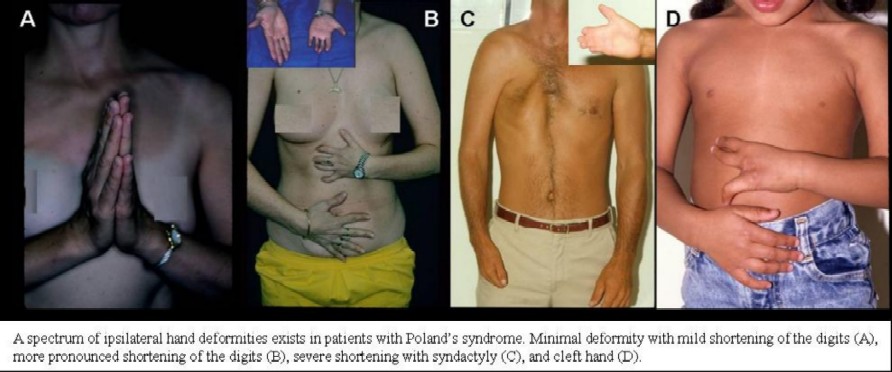Sunday, October 28, 2007
12603
Hand Anomalies in 62 patients with Poland's Syndrome
INTRODUCTION: In recent years, there has been an increased focus on hand involvement in Poland's Syndrome (PS). We reviewed 62 patients with PS for frequency and treatment of hand deformity. METHODS: Fifty-seven patients were evaluated by the senior author (AES) during a 30-year period. A colleague saw another 5 patients. All records were reviewed for presence of hand deformity and treatment offered. RESULTS: Anomalies were right-sided in 60% and left-sided in 40%. 45% had obvious ipsilateral hand abnormality including shortening of the ipsilateral upper extremity (93%), syndactyly (29%), and brachysyndactyly (3%). Severity of chest wall deformity did not always correlate with severity of hand abnormality. DISCUSSION: Our experience suggests limb deformity occurs with relatively high frequency, though severity may not be pronounced. The literature reveals 8% of syndactyly patients have PS and 26% of PS patients had hand deformity. The presence of either should prompt evaluation for the other. Proposed anatomic classification systems offer little to treatment. In our experience, treatment focused on restoration of function and patient preference. CONCLUSION: The ipsilateral upper extremity in patients with PS is frequently affected with varying degrees of severity. When identified, treatment of the hand deformity should focus on restoration of function.

View Synopsis (.doc format, 4808.0 kb)
